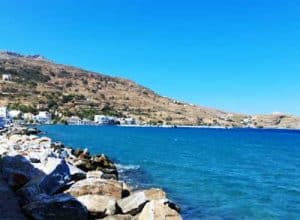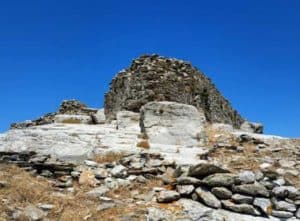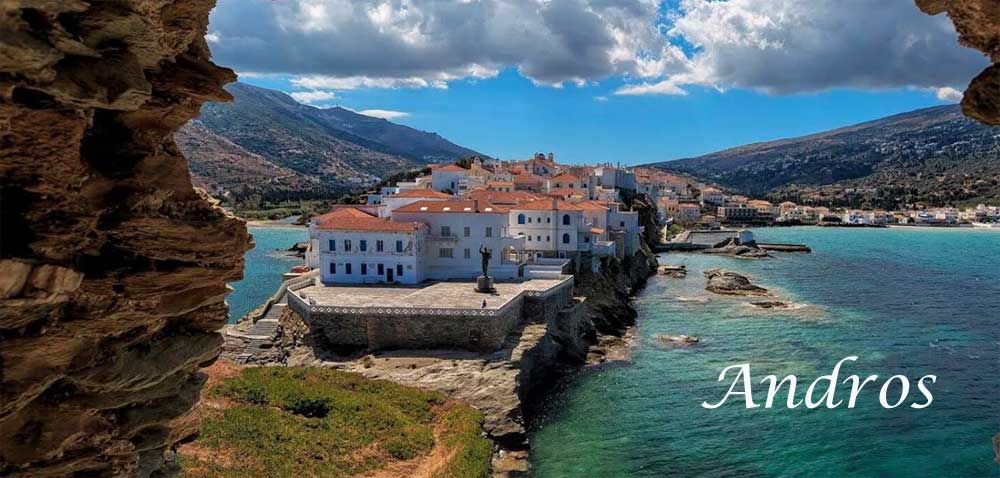The town of Korthi in Andros

The road behind the seafront is a pedestrianised area where you will find all the public services as well as a market.
On both sides of the bay, the beaches are perfect for swimming as well as offering ideal conditions for windsurfing.
Korthi, is an ideal place for exploring by foot or car. The Bay of Korthi is the economical and tourist centre of the region. Here the visitor will find most of the available accommodation, restaurants, bars and even a summer cinema. Also, the usual amenities of post office, medical centre, pharmacy and banks can be found.
A windsurfing school is also located here where surfboards can be hired. As is the whole of Andros, Korthi is an outstanding place for walking. There exists a network of ancient footpaths across the region and many of the nearby villages, such as Aidonia, Mousionas, Piso Maria and Amonakliou, can be reached by these tracks. Korthi is also connected by bus to Hora, Batsi and Gavrio.
History
Several findings in the region of Korthi, like a Mycenaean vase that today is kept in the Archaeological Museum, the Byzantine churches, the medieval fortress city of Pano Kastro, as well as several settlements and monasteries prove that the life of the area continued from antiquity until the present day.
Pano Kastro

It gave shelter to around 1,000 inhabitants and was seen as a very secure stronghold due to its lofty location and strength of structure.
There is a legend associated with the castle that, during the Middle Ages, the invading Turks, in an effort to siege the castle, sent an old woman and her pregnant daughter inside to ask for shelter.
The inhabitants welcomed them in and during the night she opened the gates to let in the Turkish invaders. However, her conscience got the better of her because, the legend claims, that following the invasion she committed suicide by hurling herself from a rock into the sea. Today, this area is known as ‘The Jump of the Old Woman’.
